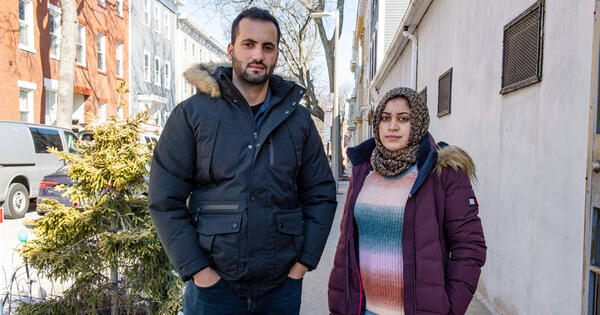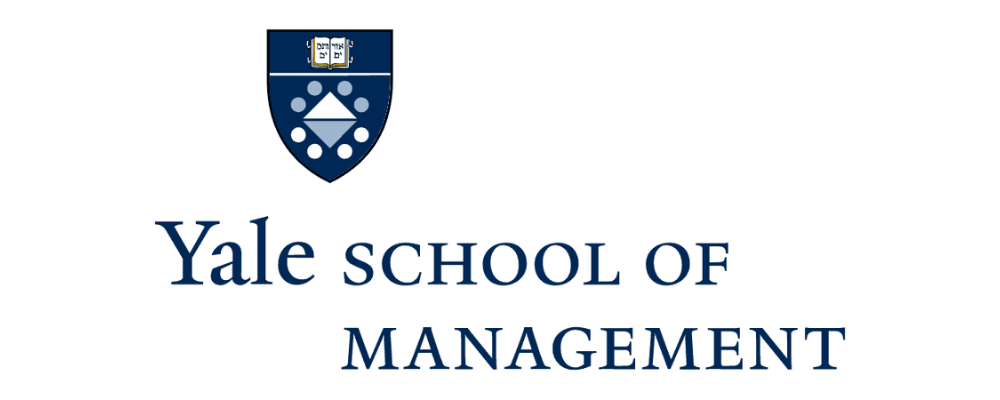
In the United States each year, resettlement agencies assist tens of thousands of refugees in finding new homes and employment; in fiscal year 2023, more than 60,000 people received resettlement services in this country. The task is monumental—and essential, as the number of displaced people around the world continues to grow.
When Yale SOM’sVahideh Manshadi learned that one of the largest such agencies was searching for a better way to decide where to send refugee families when they arrive in the U.S., she knew she had the tools to help.
Manshadi, a professor of operations, focuses on optimizing online platforms. She began her career working to improve online advertising but soon shifted to public-interest projects. Some of her past work has helped improve the kidney donor-recipient matching process and the way volunteers are paired with nonprofits seeking assistance.
“In online advertising, improved decision-making can lead to more profits,” she says. “But in the context of kidney allocation or food donation, using math or data science or operations research can actually improve or even save someone’s life.”
To improve the resettlement agency’s algorithm, Manshadi and one of her PhD students, Soonbong Lee, teamed up with Kirk Bansak of the University of California and Elisabeth Paulson of Harvard Business School, both of whom had previously worked with the agency, as well as Rad Niazadeh of the University of Chicago. Their challenge was to improve upon the way the agency assigns its refugees to local service providers in locations across the country, as measured by employment outcomes, service provider backlog, and whether a provider has exceeded its allotted refugee quota for the year.
Manshadi had read that other researchers interested in helping the agency were training their machine-learning models to use the prior year’s data about refugee characteristics (like country of origin, language skills, gender, and age) to predict the employment outcome of refugees for each location across the country. To make good decisions, it wasn’t enough to predict employment outcomes; it was also important to take into account the composition of the current year’s arriving pool of refugees. But immigration policies change from year to year, meaning that last year’s information on how many and what type of refugees arrived may not be relevant going forward.
“If you’re looking at arrival pattern data from last year to make a decision for this year, you’re basing your decision on unreliable information,” Lee says. “We decided to design an algorithm that adaptively learns the arrival pattern of the current year.”
The algorithm that Manshadi, Lee, and their co-researchers created, described in a forthcoming paper, is provided information about the current caseload of each location and an in-house machine-learning model that can predict the employment outcomes of refugees with certain characteristics in each location. The algorithm learns the arrival pattern of the current year while making weekly assignments for refugees. Because it learns the arrival pattern from week to week, the “first few decisions it makes are mere guesses; however, the algorithm has a powerful self-correcting mechanism,” Manshadi explains. As time goes on, those guesses get better and better.
Compared to the resettlement agency’s current practice—which assigns refugees based on balancing workloads without a systemic attempt to optimize the employment outcome—the model improves employment outcomes and average backlog by 50% and 30% respectively.
“If you have a heuristic that doesn’t take into account employment outcomes, you don’t expect it to make very smart matching decisions,” Manshadi says.
More significant is that the dynamic matching model also outperforms other proposed alternatives to the resettlement agency’s current practice, including one that relies on the prior year’s data on the arriving pool of refugees.
Another advantage is that the model created by Manshadi and Lee is fast and easy to use for resettlement agency staff, providing a score ranking the locations based on, among other factors, how well a given refugee might do there (in terms of employment outcomes) and how their arrival would affect a location’s workload.
“We are able to obtain the same or better employment outcomes while also reducing the workload for locations across the country,” Lee says. “It’s a win-win situation.”
Manshadi, Lee, and their co-researchers also created and tested a different version of their model that can operate without knowing the existing caseloads of the various service providers. Their so-called “congestion-oblivious” model expands their method’s potential application to other contexts where caseloads may not be easily ascertained, including the healthcare industry (where patients need onboarding services upon admission but caseloads for service providers such as nurses may not be easily available) or even foster care systems.
The resettlement agency is currently testing the various alternatives for its refugee matching system; meanwhile, the researchers are presenting their model to other refugee agencies around the world. For Manshadi and Lee, the work has been gratifying.
“It’s great to see that math and operations research—something that can seem abstract and not super relevant—can be used to make a tangible impact on society,” Manshadi says.
Lee adds, “I always wanted to do math related to people. This is a very exciting time to be in operations research.”
“The Yale School of Management is the graduate business school of Yale University, a private research university in New Haven, Connecticut.”
Please visit the firm link to site


